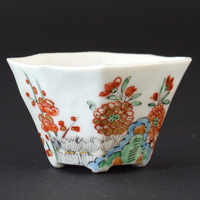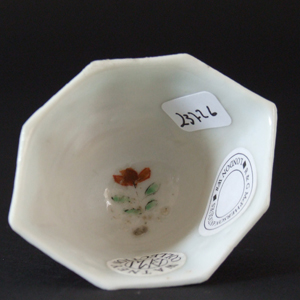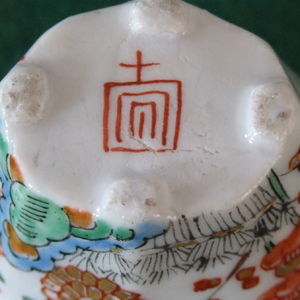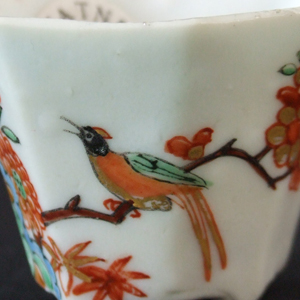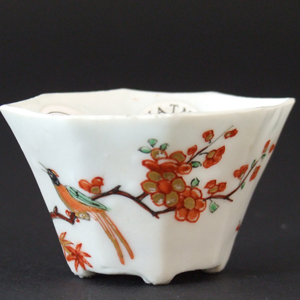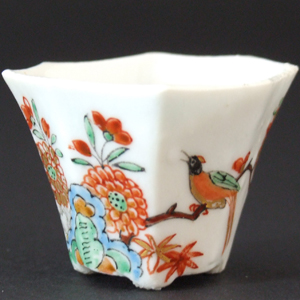
KANGXI 1662 – 1722 Dutch Decorated Blanc de Chine Porcelain
A Dutch Decorated Kangxi Miniature Octagonal Wine Cup (Libation Cup). Painted in Strong Bright Clear Enamels in the Kakiemon Style in c.1720. The Design Includes Banded Hedge, Chrysanthemum and a Bird on a Branch.
SOLD
- Condition
- In good condition .
- Size
- Length : 5.5 cm (2 1/4 inches)
- Provenance
- Robert McPherson Antiques Bernard Watney The Watney Collection of Chinese Porcelain Decorated in Holland and England, Bonham`s London, 7th November 2003, part lot 15. The catalogue entry notes "The decoration on the libation cups resembles enamelling seen on Dutch Delft dore. The red mark suggests a date of c.1720".
- Stock number
- 23726
Information
Kakiemon Porcelain :
Kakiemon decoration is usually of high quality, often delicate and with well-balanced asymmetric designs. The designs were normally quite sparse emphasizing the fine white porcelain body known in Japan as Nigoshide (milky white). The opaque white milky Nigoshide body was used on the finest pieces, it appears that it was reserved for fine quality enamelled decoration. Kakiemon porcelain was decorated with a great variety of imaginative designs which include elements such as the `banded hedge`, `flying squirrel`, and the `Quail and Millet` design. The `Three Friends of Winter` were also a very popular group of designs, other subject taken from nature include flowers (especially the chrysanthemum, the national flower of Japan) as well as birds and rock-work. Figural subjects such as the `Hob in the Well` were also popular. This design illustrates a Chinese folk tale where a sage saves his friend who has fallen into a large fish-bowl by throwing stones at it, braking open the pot. Banded-Hedges were a formal device within Japanese traditional gardens, they were often incorporated in designs, includes `The Three Friends of Winter` (Pine, Bamboo and Prunus). These three plants signify perseverance, as neither the pine nor the bamboo shed their leaves in winter and the plumb (Prunus) flowers at the very end of the winter, heralding the arrival of spring.
Libation Cups :
Blanc de Chine cups of this type have been traditionally referred to as `Libation Cups`. This is unlikely to be correct but their shape follows that of rhinoceros horn cups which was made locally, it is interesting baring in mind the important powers that the Chinese attach to this material. By having a Blanc de Chine cup of this form some of the powers of real rhinoceros horn might be conveyed to the drinker.
